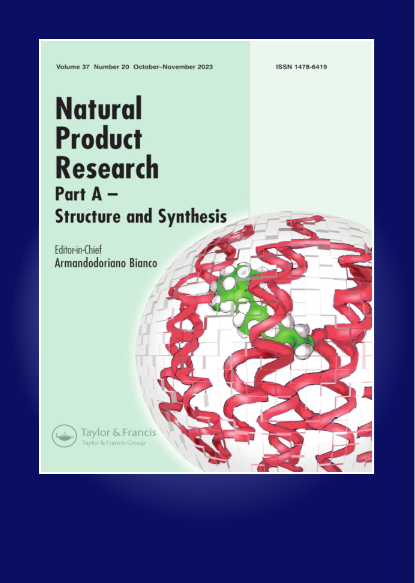通过AMPK/mTOR途径恢复地巴皂甙B的自噬活性可减轻劳累运动引起的肾损伤。
IF 1.9
3区 化学
Q3 CHEMISTRY, APPLIED
引用次数: 0
摘要
剧烈运动(EE)会诱发肾损伤,但其具体机制尚未完全阐明。以前曾发现过地巴苷 B(DB)的保肝作用,其中涉及自噬诱导。然而,DB 是否具有肾脏保护作用及其潜在机制尚不清楚。本研究旨在探讨 DB 在 EE 诱导的肾损伤中的益处及其潜在机制。在本研究中,我们发现 DB 可改善 EE 诱导的大鼠肾功能障碍和肾组织病理学损伤。DB 在运动诱导的衰竭大鼠肾脏中具有抗炎、抗氧化和抗凋亡功能。此外,DB 还能改善 EE 大鼠肾脏的自噬功能。从机理上讲,DB 诱导的肾损伤缓解作用和自噬功能恢复与激活腺苷酸激活蛋白激酶(AMPK)/哺乳动物雷帕霉素靶蛋白激酶(mTOR)通路有关。总之,这些发现为 DB 在预防和控制 EE 引起的肾损伤方面的临床应用提供了参考。本文章由计算机程序翻译,如有差异,请以英文原文为准。
Restoration of autophagy activity by dipsacoside B alleviates exhaustive exercise-induced kidney injury via the AMPK/mTOR pathway
Exhaustive exercise (EE) induces kidney injury, but its concrete mechanism has not been fully elucidated. Hepatoprotective effects of dipsacoside B (DB) have been found previously, involving in autophagy induction. However, whether DB exerts renal protective effect and its potential mechanism are still unknown. The present study aimed to investigate the benefit of DB in EE-induced kidney injury and decipher its underlying mechanism. Here, we found that DB ameliorated EE-induced renal dysfunction and renal histopathological injury in rats. DB possessed anti-inflammatory, anti-oxidative, and anti-apoptotic functions in kidneys of exercise-induced exhausted rats. Besides, DB improved autophagy function in kidneys of EE rats. Mechanically, activation of the adenylate-activating protein kinase (AMPK)/mammalian target of rapamycin (mTOR) pathway was implicated in the kidney injury-relieving effects and autophagy restoration induced by DB. Collectively, these findings provide reference for the clinical application of DB in preventing and managing EE-induced kidney injury.
求助全文
通过发布文献求助,成功后即可免费获取论文全文。
去求助
来源期刊

Natural Product Research
化学-医药化学
CiteScore
5.10
自引率
9.10%
发文量
605
审稿时长
2.1 months
期刊介绍:
The aim of Natural Product Research is to publish important contributions in the field of natural product chemistry. The journal covers all aspects of research in the chemistry and biochemistry of naturally occurring compounds.
The communications include coverage of work on natural substances of land and sea and of plants, microbes and animals. Discussions of structure elucidation, synthesis and experimental biosynthesis of natural products as well as developments of methods in these areas are welcomed in the journal. Finally, research papers in fields on the chemistry-biology boundary, eg. fermentation chemistry, plant tissue culture investigations etc., are accepted into the journal.
Natural Product Research issues will be subtitled either ""Part A - Synthesis and Structure"" or ""Part B - Bioactive Natural Products"". for details on this , see the forthcoming articles section.
All manuscript submissions are subject to initial appraisal by the Editor, and, if found suitable for further consideration, to peer review by independent, anonymous expert referees. All peer review is single blind and submission is online via ScholarOne Manuscripts.
 求助内容:
求助内容: 应助结果提醒方式:
应助结果提醒方式:


